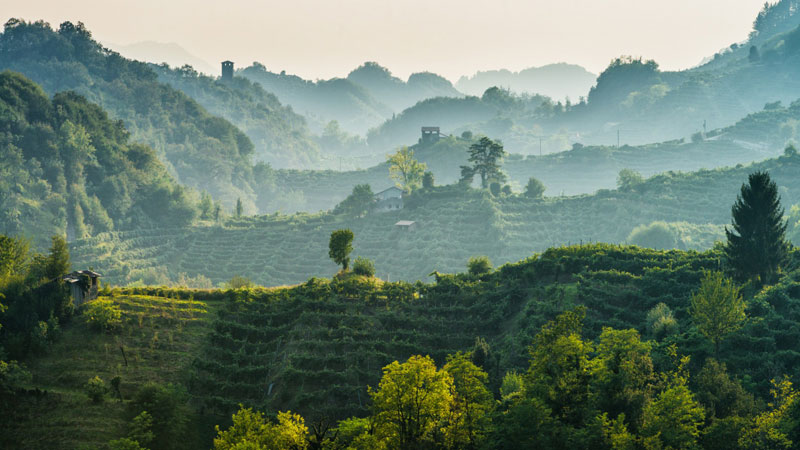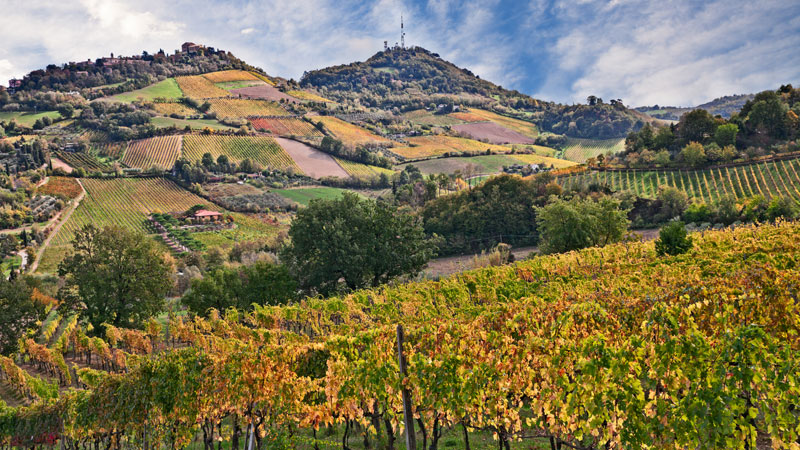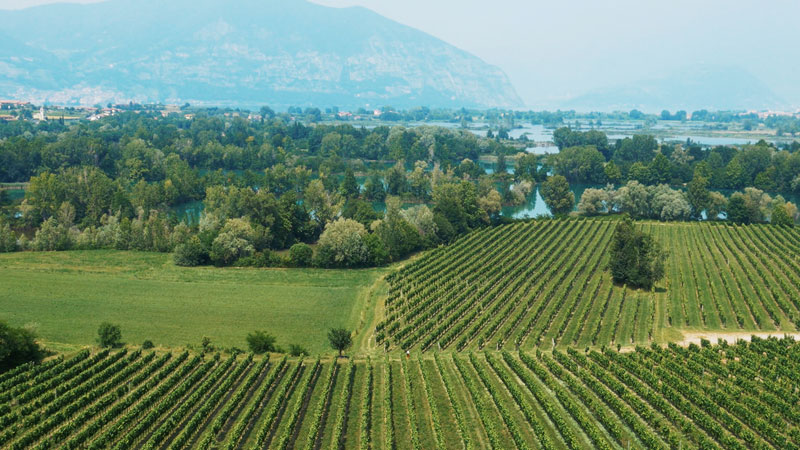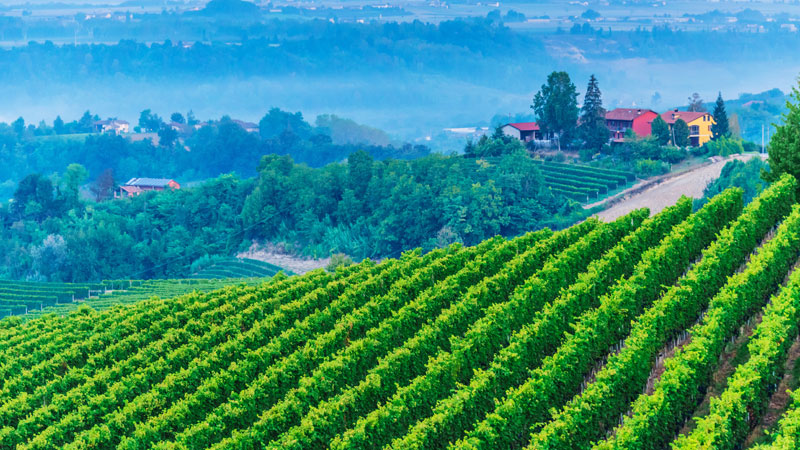Prosecco is a global superpower. Nearly 20 percent of all sparkling wine sold in 2017 was Prosecco, according to Nielsen data, and sales were up 21 percent over the previous year.
And that’s not the half of it. Industry experts like Vinexpo CEO Guillaume Deglise predict that Prosecco sales will continue to soar, increasing by more than 36 percent through 2020. By comparison, Deglise expects that Champagne will grow 1 percent by volume, and cava will remain stable.
Prosecco’s massive popularity means it can overshadow other sparkling wines, both abroad and within its native Italy. After all, every bubbly Italian wine is not necessarily Prosecco. There’s also Lambrusco, Franciacorta, Trentodoc (metodo classico), and Asti Spumante.
Spumante is simply an adjective used to denote “sparkliness” (technically, the pressure of dissolved CO2 in the bottled wine) in any wine. It simply translates to “sparkling wine” and doesn’t denote any particular style or grape. “Frizzante,” which you’ll also see on a lot of Italian bubbly labels, simply means “lightly sparkling.” Spumante and frizzante wines can hail from all over Italy.
Ready to learn more? Pronto! Here are the differences between Prosecco, Lambrusco, Franciacorta, Trentodoc, and Asti Spumante.
Prosecco

Prosecco is the name of both a historic grape and an appellation in northern Italy’s Veneto and Friuli-Venezia Giulia provinces. (There’s a town called Prosecco, too.)
Prosecco has some deep history in the region. The first recorded mention of “Prosecho” wine is in the 1593 diaries of English traveler Fynes Morison. In 1754, Aureliano Acanti references it in his book, “Il Roccolo Ditirambo,” describing it as “…apple scented wine, which is indeed full of apple, pear and apricot aromas, with hints of warm grass.”
For centuries, folks have made still wine using the local grape, known as Prosecco. In 2009, however, the name of the Prosecco grape was changed to Glera, to prevent producers outside the Prosecco DOC and DOCG regions from using the name on their labels.
Today, Glera remains the main grape in Prosecco. Other varieties used in Prosecco include Perera, Bianchetta, Verdiso, Chardonnay, Pinot Gris, and Pinot Noir.
Prosecco is characterized by approachable, crisp, green-apple flavors. According to sommelier Sarah Tracey of The Lush Life, 76 percent of Prosecco is made in the spumante style, 23 percent is frizzante, and only 1 percent is tranquillo (still).
Prosecco can be made in either the Charmat method, which achieves effervescence via secondary fermentation in tanks, or metodo classico, the Italian term for the Champagne method for individual bottle fermentation.
Prosecco caliber is denoted on labels with the words Denomination of Controlled Origin (DOC), or the even higher-quality Denomination of Controlled and Guaranteed Origin (DOCG).
“In Prosecco, there is actually a pyramid of quality,” Tracey says. “On the bottom is the basic Prosecco DOC. If you want to uplevel to a bit higher quality, look for Conegliano Valdobbiadene Prosecco Superiore D.O.C.G. At the very top of the pyramid is Valdobbiadene Superiore di Cartizze DOCG, if you really want to treat yourself!”
Lambrusco

Lambrusco, a red sparkler, hails from Emilia-Romagna, the northwestern region near Veneto that also claims such culinary delicacies as tortellini, prosciutto di Parma, and Parmigiano-Reggiano cheese.
The wine shares a name with the family of grapes with which it’s made. There are eight closely related grapes within the Lambrusco family, including Lambrusco di Sorbara, Lambrusco Maestri, and Lambrusco Salamino. And they make some ancient juice: Historians credit the first mention of the Lambrusco family of grapes to the 160 B.C.E. Latin essay, “De Agri Cultura.”
In the latter half of the 20th century, most American imports of Lambrusco were deathly sweet, grape-juice-esque fruit bombs. Fortunately, in recent years, better-caliber bottles are available in both semisecco (lightly sweet) and secco (dry) iterations. Most are frizzante.
Lambrusco can be made using Charmat, traditional, or ancentrale methods.
Trentodoc

Relatively unknown in the United States, Trentodoc is an Alpine bubbly that hails from Italy’s northeastern Dolomites range. According to wine writer Nick Passmore, the name Trentodoc is a “clumsy portmanteau” of the city name and Italy’s DOC classification; nonetheless, Passmore urges consumers to get better acquainted with the category, saying Trentodoc wines are “packed with vivacious personality.” VinePair also salutes Trentodoc wines, saying it “may just have the highest potential of Italy’s sparkling wines.”
Trentino is the second-largest producer of Italian wines made using metodo classico, the process in which secondary fermentation occurs in individual bottles, à la France’s méthode Champenoise. Trentodoc wines use many of the same grapes as Champagne, too: Pinot Noir, Chardonnay, Pinot Meunier, and Pinot Bianco.
Franciacorta

Winemakers in Lombardy, a region bordering Switzerland in northern Italy, produce Franciacorta sparkling wines using the same grapes and method as those in Champagne. Franciacorta wines are made using metodo classico with Chardonnay, Pinot Noir, and Pinot Bianco grapes. Franciacorta wines are typically drier and less fruity than Prosecco, but lack the complex minerality of Champagne.
When seeking out a premium Italian sparkling wine in the spumante style, look for a DOCG Franciacorta, suggests David Rudman, Director of Business Development – USA for the Wine & Spirit Education Trust (WSET).
It’s a relatively recent entrant to the sparkling wine space, too. The first Franciacorta wine was made in 1961.
Asti Spumante

Moscato Bianco grapes headline Asti Spumante, which hails from southeastern Piemonte. A low-alcohol wine with ample residual sweetness, Asti Spumante is carbonated via single-tank fermentation using the Charmat method.
It is closely related to Moscato d’Asti. Both are made in Piemonte using Moscato Bianco, but Moscato d’Asti is less effervescent and often has even lower alcohol content.
“For a very clear understanding of the difference between frizzante and spumante, taste a Moscato d’Asti (frizzante) against an Asti Spumante (spumante),” Rudman says. “Frizzante wines are easier to drink, but spumante-level sparkles can be very interesting components in a food pairing, as they can cut through fats and moderate saltiness.”
